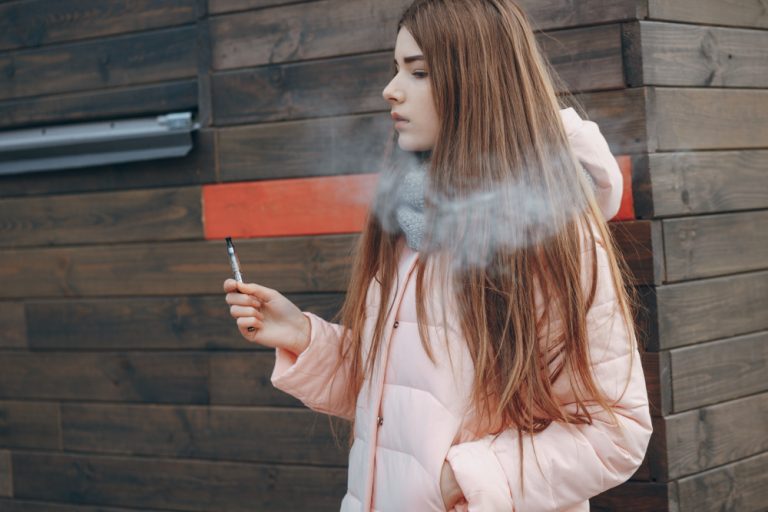Peer pressure has long been recognized as one of the most influential factors affecting adolescent behavior, especially when it comes to habits like smoking. During the teenage years, individuals often feel the need to fit in with their social groups, which can lead to risky choices. One such choice is smoking—often seen as a symbol of rebellion or maturity. Understanding how peer dynamics contribute to this behavior is essential in preventing addiction and promoting healthier lifestyles, a goal championed by facilities like Nasha Mukti Kendra in Shimla.
The Psychology Behind Peer Influence
Adolescents are in a critical developmental phase where identity formation is strongly influenced by their surroundings. Friends and social groups play a pivotal role in shaping attitudes and behaviors. Teens are more likely to mimic what their peers are doing, especially if it brings them social approval or acceptance. Unfortunately, this can include experimenting with cigarettes, e-cigarettes, or other tobacco products. This foundational understanding of peer psychology is often addressed in intervention strategies by institutions such as Nasha Mukti Kendra in Shimla.
Social Acceptance vs. Personal Judgment
Many teens start smoking not because they inherently want to, but because they don’t want to feel left out. The fear of being excluded or ridiculed often overrides their personal judgment. They may believe that smoking is a ticket to popularity or adulthood, especially if influential peers or role models endorse the habit. This internal conflict between personal values and social conformity is a recurring theme in counseling sessions at Nasha Mukti Kendra in Shimla.
Media and Pop Culture Influence
In today’s digital age, social media, movies, and pop culture also contribute to the normalization of smoking among teens. Influencers or celebrities who casually display smoking can reinforce the idea that it’s trendy or sophisticated. Teens, driven by a desire to imitate these public figures, may pick up smoking to replicate what they see. This modern extension of peer pressure is increasingly discussed in youth awareness programs at Nasha Mukti Kendra in Shimla.
The Rise of Vaping and E-Cigarettes
While traditional cigarettes are still prevalent, vaping has become the new gateway for nicotine addiction among teenagers. E-cigarettes are often marketed as “safe” or “cool” and come in flavors that appeal to younger users. Peer influence plays a significant role in making vaping socially acceptable among teen groups. Addressing misconceptions about vaping is a growing focus in adolescent addiction recovery programs at Nasha Mukti Kendra in Shimla.
Early Exposure and Long-Term Risks
Studies show that teens who start smoking early are more likely to become regular smokers in adulthood, increasing their risk of chronic diseases and mental health issues. Peer-induced habits can have a long-lasting impact, as early nicotine exposure alters brain chemistry and decision-making abilities. This is why early intervention and prevention are key elements of the approach taken by professionals at Nasha Mukti Kendra in Shimla.
Parental Awareness and Involvement
Parents often underestimate the power of peer pressure or assume their child would “know better.” However, open communication and active involvement in a teen’s life can significantly reduce the likelihood of them succumbing to unhealthy influences. When parents educate their children about the dangers of smoking and offer support without judgment, teens are more likely to resist peer pressure. Family counseling is an essential component of treatment programs at Nasha Mukti Kendra in Shimla.
The Role of Schools and Educators
Schools are in a unique position to identify early signs of peer-influenced smoking behaviors. Teachers, counselors, and administrators can introduce anti-smoking campaigns, peer mentoring programs, and anonymous reporting systems to deter such behaviors. Partnering with external health organizations like Nasha Mukti Kendra in Shimla can enhance the effectiveness of these initiatives by offering expert-led workshops and support services.
Building Teen Resilience and Confidence
One of the most effective ways to combat peer pressure is by equipping teens with strong decision-making and coping skills. When young people are confident in their values and aware of the consequences of smoking, they are less likely to give in to social influence. Empowerment through self-awareness and mental strength is a core principle behind the youth engagement strategies at Nasha Mukti Kendra in Shimla.
Peer Pressure Isn’t Always Negative
Interestingly, peer influence can also be used positively. When peer groups support healthy behaviors—like exercise, volunteering, or abstaining from substance use—they create an environment that encourages others to follow suit. Initiatives that promote positive peer bonding and role modeling are being increasingly incorporated into adolescent wellness campaigns by facilities like Nasha Mukti Kendra in Shimla.
Seeking Help and Support
Recognizing when a teen is struggling with smoking or peer pressure is the first step to helping them. Warning signs may include changes in behavior, secrecy, new friend groups, or the presence of smoking-related items. Support systems, including parents, educators, and professionals, must work together to guide teens back to a healthier path. Centers like Nasha Mukti Kendra in Shimla offer specialized programs tailored to the unique psychological and social needs of adolescents.
Conclusion
Peer pressure plays a profound role in influencing smoking habits among teenagers. While the desire to fit in is natural during adolescence, it can sometimes lead to harmful decisions like taking up smoking. Education, open dialogue, and timely intervention can make all the difference in shaping healthier choices. If you or someone you know is dealing with teen smoking or peer-related stress, compassionate help is available at Nasha Mukti Kendra in Shimla.


